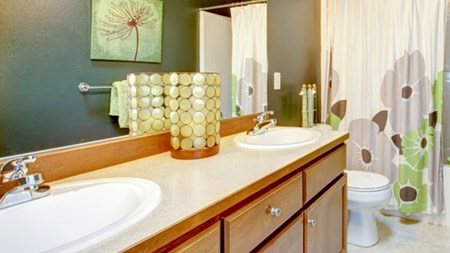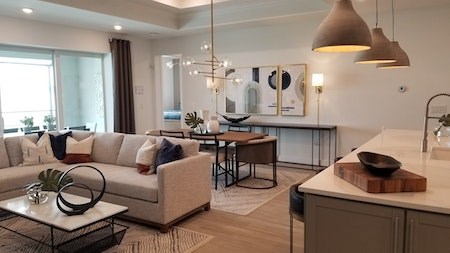It's hard to believe, but avocado bathroom suites made headlines throughout Britain recently. Why? Well, because it was found that 62 percent of the 2000 people polled in a Barclay's Bank survey were turned off by this 70s relic. For the record, lime green and purple exterior paint jobs didn't make the cut either.
Although South Africans may have different aversions, there are certain things that can stop a buying decision dead in its tracks. Decorating trends may come and go, but some things - such as the granny print wall paper with matching curtains, lampshade and duvet set - may have an impact on the way the buyer views the home.
Likewise, the shaggy pile carpet (you know, the one that invariably gets itself into knots and dislocates toes when snagged), that was all the rage during the 70s and 80s should generally be regarded as a no-no. Another outdated trend that may put buyers off are mirrored walls, ceilings and wardrobes. Linoleum floor coverings are no longer in fashion and it may be a good idea to replace this with tiles. On the subject of flooring, another huge turnoff for the polled British buyers was carpeting in the bathroom. Again, this may have been popular during the 70s, but today's modern buyer seems to prefer tiled flooring in their bathroom designs.
We all have different interior design tastes and these are reflected in our furnishings and finishes. Unfortunately, the more outlandish and/or outdated these are, the more likely they are to affect buyers and could ultimately have an impact on the selling price.
Real estate agents often note that it's easier to sell a home that has a uniform, nondescript paint job throughout. While we are not suggesting that a purple wall in the lounge will prevent a sale, it could prove to be a turnoff for some buyers. Paint of course is relatively cheap and it's therefore easy to gloss over minor irritants. However, when it comes to replacing the disagreeably coloured bathroom suite or the chipboard cupboards (complete with peeling melamine) in a kitchen, it becomes an entirely different story.
Buyers are understandably reluctant to pay top price for a home that needs a great deal of renovation or 'plastic surgery' – and especially so if there are other, similarly-priced homes in the area that need little in the way of fixing up. Unfortunately, those who have lived in a property for a lengthy period of time often either don't notice that the home may be out of vogue or simply don't have the finances to address the problem areas.
How you decorate your home is obviously a personal choice, but it may be an idea to start taking a critical look at the home long before you put it on the market and start replace old, tired looking fixtures. Yes, it may cost a tidy sum to replace the bathroom suite or kitchen units, but providing that things are kept simple (and the renovation doesn't include things like gold taps), the homeowner should more than make up these costs when the property eventually sells.



